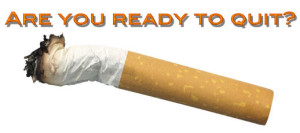
1. Make an honest list of all the things you like about smoking. Draw a line down the center of a piece of paper and write them on one side; on the other side make a list of all the things you dislike, such as how it can interfere with your health, work, family, etc., suggests Daniel Z. Lieberman, M.D., director of the Clinical Psychiatric Research Center at George Washington University Medical Center in Washington, D.C. Think about the list over time, and make changes. If you are brave enough, get feedback from family and friends about things they don’t like about your use of cigarettes. When the negative side outweighs the positive side, you are ready to quit.
2. Then make another list of why quitting won’t be easy. Be thorough, even if the list gets long and discouraging. Here’s the important part: Next to each entry, list one or more options for overcoming that challenge. For instance, one item might be: “Nicotine is an addictive drug.” Your option might be: “Try a nicotine replacement alternative.” Another reason might be: “Smoking helps me deal with stress.” Your option might be: “Take five-minute walks instead.” The more you anticipate the challenges to quitting, and their solutions, the better your chance of success.
3. Set a quit date and write a “quit date contract” that includes your signature and that of a supportive witness.
4. Write all your reasons for quitting on an index card and keep it near you at all times. Here are some to get you started: “My daughter, my granddaughter, my husband, my wife…”
You get the idea.
5. As you’re getting ready to quit, stop buying cartons of cigarettes. Instead, only buy a pack at a time, and only carry two or three with you at a time (try putting them in an Altoids tin). Eventually you’ll find that when you want a smoke, you won’t have any immediately available. That will slowly wean you down to fewer cigarettes.
6. Keep a list of when you smoke, what you’re doing at the time, and how bad the craving is for a week before quitting to see if specific times of the day or activities increase your cravings, suggests Gaylene Mooney, chair of the American Association for Respiratory Care’s Subcommittee on Smoking and Tobacco-Related Issues. Then arrange fun, unique things to do during those times, like some of the ones we recommend here.
7. Prepare a list of things to do when a craving hits. Suggestions include: take a walk, drink a glass of water, kiss your partner or child, throw the ball for the dog, wash the car, clean out a cupboard or closet, have sex, chew a piece of gum, wash your face, brush your teeth, take a nap, get a cup of coffee or tea, practice your deep breathing, light a candle. Make copies of the list and keep one with you at all times so when the craving hits, you can whip out the list and quickly do something from it.
8. When your quit date arrives, throw out anything that reminds you of smoking. That includes all smoking paraphernalia — leftover cigarettes, matches, lighters, ashtrays, cigarette holders, even the lighter in your car.
9. Instead of a cigarette break at work, play a game of solitaire on your computer. It takes about the same time and is much more fun (although, like cigarettes, it can get addictive). If your company prohibits games like that, find another five-minute diversion: a phone call, a stroll, or eating a piece of fruit outdoors (but not where smokers congregate).
10. Switch to a cup of herbal tea whenever you usually have a cigarette. That might be at breakfast, midmorning, or after meals. The act of brewing the tea and slowly sipping it as it cools will provide the same stress relief as a hit of nicotine.
